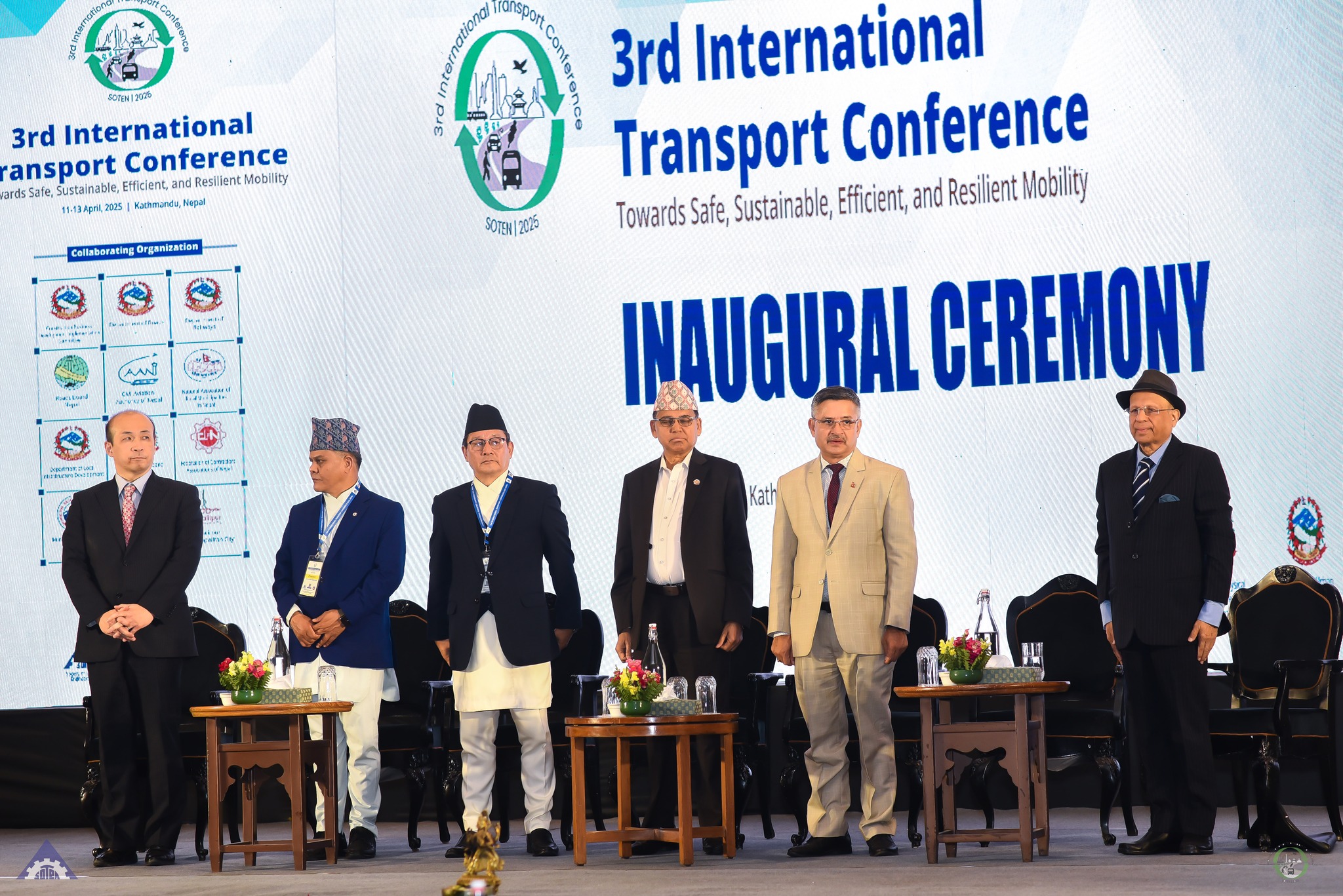Conference

3rd International Transportation Conference
The Third International Transport Conference 2025, organized jointly by the Society of Transportation Engineers Nepal (SOTEN), Ministry of Physical Infrastructure and Transport (MOPIT); and Ministry of Urban Development (MOUD) was held in Nepal from 11–13 April 2025. The event brought together transport experts, policymakers, researchers, and industry leaders to discuss safe, sustainable, resilient, and innovative transport solutions for Nepal and beyond. The event featured 23 International and 52 national speakers, spread across 15 technical sessions, with over 320 participants from 13 countries.
The event brings international collaboration with Eastern Asian Society of Transport Studies, Asian Transport Observatory, International Road Assessment Programme and International Road Federation. Other major governmental stakeholder covering federal, provincial and local government were a part of the collaboration. Department of Roads, Department of Local Infrastructure Development, Construction Business Development Implementation Committee, Department of railway, Road Board Nepal, Investment Board Nepal, Civil Aviation Authority of Nepal, Municipality Association of Nepal, National Association of Rural Municipality of Nepal, Kathmandu Metropolitan City, Lalitpur Metropolitan City and Federation of Contractors Association of Nepal were the collaborating partners along with support from other professional societies and sponsors.
The inaugural brings high dignitaries on the event. Susanna Zammataro, Director General of the International Road Federation (IRF); and Professor Fujiwara, President of the Eastern Asia Society for Transportation Studies (EASTS) provide the opening remarks followed by keynote remarks from Keshab K. Sharma, Secretary of the Ministry of Physical Infrastructure and Transport (MoPIT); Professor Kaito from Osaka University; and Bindu Lohani, Chair of Clean Air Asia and former vice president, Asian Development Bank. The event was further enlightened by the presence and remarks of Hon’rable Devendra Dahal, Minister of Physical Infrastructure and Transport.
The program brings special presentation from international speakers covering 12 countries covering diverse sector ranging from intermodal transportation, safe transportation system, sustainable mobility, transport connectivity, slope stabilization, asset management, public transportation, traffic engineering, civil aviation, technology in transportation sector, resilient transport infrastructure and many other. The events bring various researchers and professional working in Nepal presenting their research, innovation, and works. With Nepal adopting federal structure, it was utmost necessary to discuss about the issue and challenge on provincial and local level and the conference brings the representative to talk on the issue. The final technical session brings the major government stakeholder working in transport sector to discuss about their future and way forward for betterment of the sector.
The closing session brings high delegate representation which shows commitment for their effort in transportation sector. Greg Smith, International Road Assessment Program (iRAP) and Alvin Mejia, Asian Transport Observatory give closing remarks highlighting the important of the conference. Similarly, Er. Sushil Gyawali, CEO of Investment Board Nepal highlight importance of mega transport project to ensure achievement target as per SDG and economic boost. Similarly, Honorable Minister Aman Maskey emphasized the role of transport sector in overall provincial development and commit to implement the lesson learn during the conference. Finally, Honorable Prof. Dr. Shiva Raj Adhikari, Vice Chairman of National Planning Commission provide the integration and optimization requisite for the betterment of transport sector and call for implementation of the resolution of the conference. The conference end with 11-point resolution which will be the integral part for future discussion and advocacy.
During the conference, Society of Transport Engineers Nepal (SOTEN) had the opportunity to renew its collaboration with Asian Transport Observatory(ATO) for research, capacity building and knowledge sharing in transport sector. The conference concluded in the leadership of Er. Hare Ram Shrestha, PHD. Chair of the Organizing Committee and Er. Hemant Tiwari, Conference Convener.
Link to photos : https://drive.google.com/drive/folders/1I0wZkuqlIlB0-MsaYW9i71oGs2QCrJng?usp=drive_link